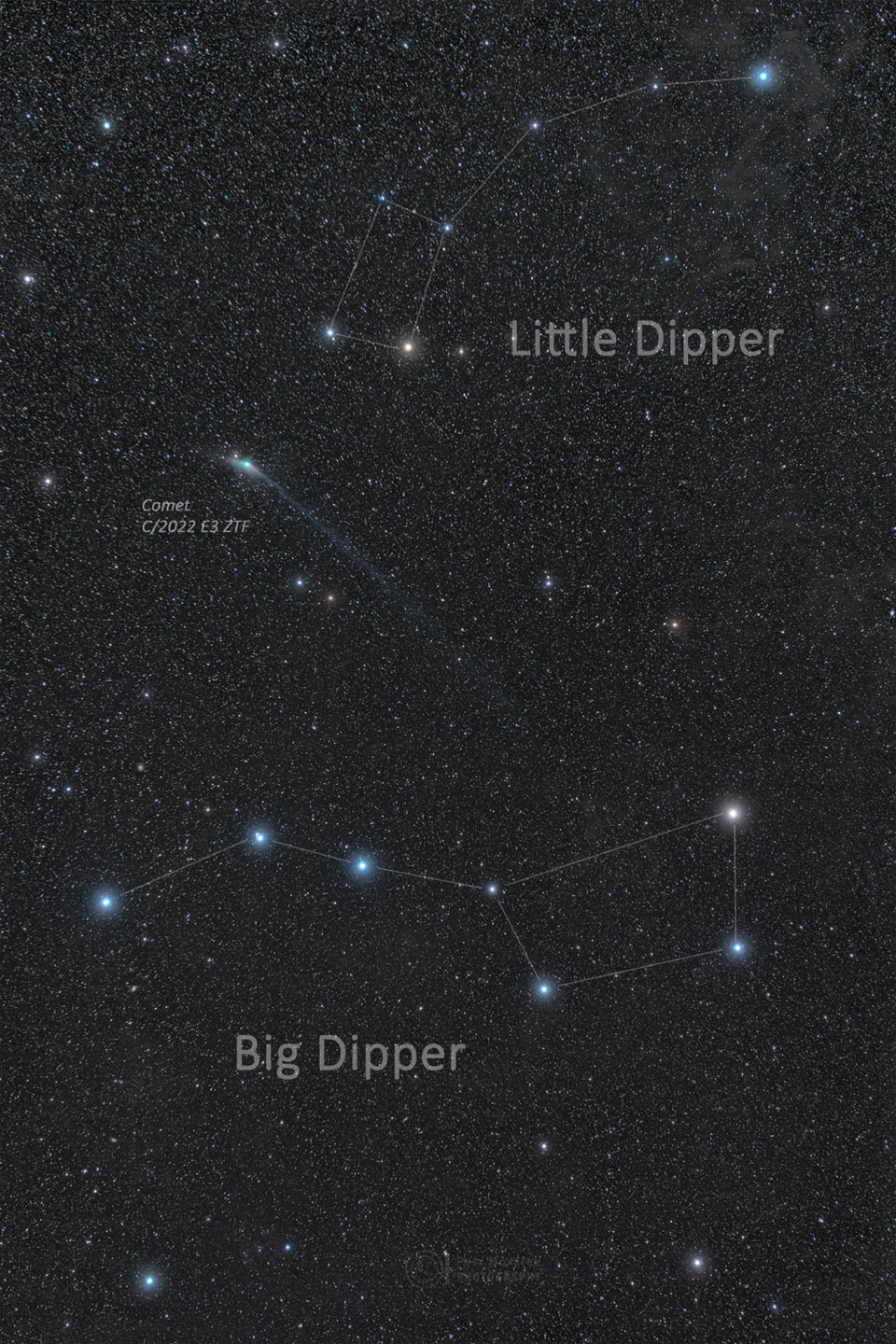안녕하세요, 잡학다식 입니다. 오늘은 과연 나사에서 어떤 방식으로 우주의 형상을 표현해 줄까요?
우선 이미지부터 볼 수 있도록 하겠습니다

해당 사진의 이름은 A Comet and Two Dippers 인데요 우선 NASA에서 공식적으로 발표한 설명들을 확인해 보겠습니다
Can you still see the comet? Yes. Even as C/2022 E3 (ZTF) fades, there is still time to see it if you know where and when to look. Geometrically, Comet ZTF has passed its closest to both the Sun and the Earth and is now headed back to the outer Solar System. Its orbit around the Sun has it gliding across the northern sky all month, after passing near Polaris and both the Big and Little Dippers last month. Pictured, Comet ZTF was photographed between the two dippers in late January while sporting an ion tail that extended over 10 degrees. Now below naked-eye visibility, Comet ZTF can be found with binoculars or a small telescope and a good sky map. A good time to see the comet over the next week is after the Sun sets -- but before the Moon rises. The comet will move nearly in front of Mars in a few days Comet ZTF Gallery: Notable Submissions to APOD
이번에도 광활한 우주 앞에 인간이 얼마나 작은 존재인지 다시 한번 알게 되는것 같습니다
저는 내일도 더 좋은 사진과 함께 돌아오겠습니다, 그럼 행목한 하루 되시길 바랍니다
'과학상식' 카테고리의 다른 글
| NASA 나사의 오늘의 이미지들 (2023-02-09) (0) | 2023.02.10 |
|---|---|
| NASA 나사의 오늘의 이미지들 (2023-02-08) (0) | 2023.02.09 |
| NASA 나사의 오늘의 이미지들 (2023-02-06) (0) | 2023.02.07 |
| NASA 나사의 오늘의 이미지들 (2023-02-05) (0) | 2023.02.06 |
| NASA 나사의 오늘의 이미지들 (2023-02-04) (0) | 2023.02.05 |